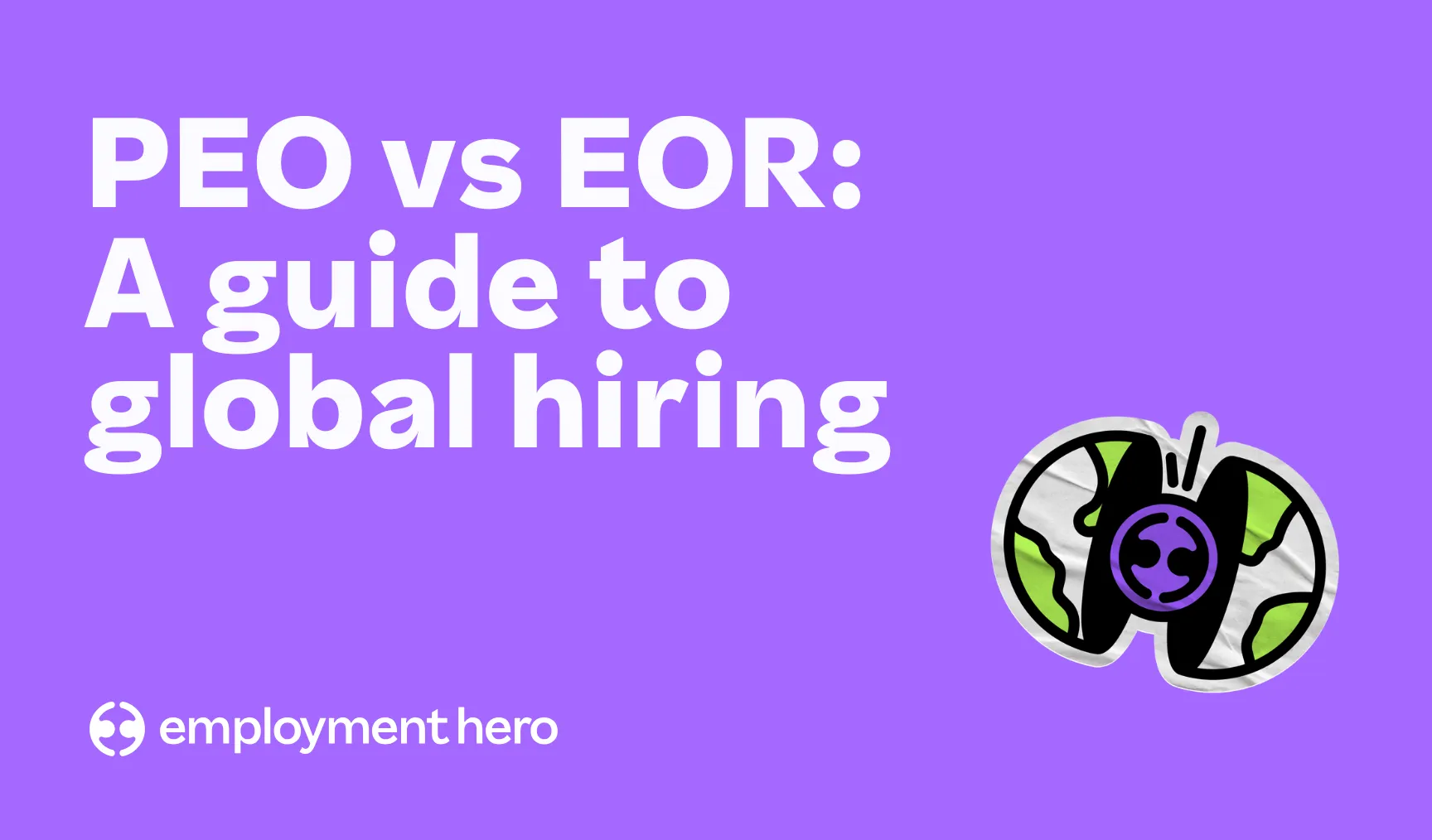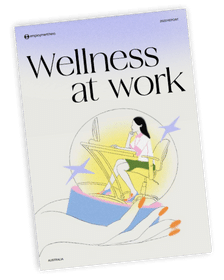15 Occupational Stress Statistics: How Businesses Can Support Their Employees
Are you a business owner or HR professional wondering what occupational stress is and how you can better support your employees? We’ve got you.

Occupational stress can have a huge impact on the health and wellbeing of employees and for small business owners, and HR professionals, it can really play havoc with your team—affecting productivity, engagement and your bottom line.
Getting a deeper understanding of what occupational stress is and the impact it has is crucial when creating a workforce that is happy, healthy and resilient.
Here’s a round-up of the top 15 occupational stress statistics you should know. Handy right?
TLDR: Here’s what you’ll get
- An understanding of how to recognise and handle occupational stress.
- The top 15 occupational stress statistics.
- Signs of workplace stress to look out for.
- The best occupational stress management strategies.
Understanding occupational stress
What is occupational stress?
Pressure can get to us all, but what is occupational stress and how does it differ from regular job-related pressures?
Occupational stress, (also called workplace stress or job stress), is a mental health concern that can be experienced by employees due to work related issues. Day-to-day pressures can arise if you have typical responsibilities and deadlines but occupational stress occurs when the requirements of a job role exceed an employee’s ability to cope effectively.
Common causes of occupational stress in businesses
Occupational stress can be caused by a variety of things. Some of the main examples include:
High workloads
In fast paced workplaces, there is often a high workload and an expectation of high performance. Many employees thrive in these situations, but in some cases, the workload can become too much. For employees that have tight deadlines, limited resources, or who cover multiple disciplines, it can be overwhelming.
Lack of support
Many workplaces–just like yours–place an emphasis on employee wellbeing, and ensuring their team feels supported. And this is often a testament to HR teams.
Unfortunately, this is not always the case. A lack of guidance and support from line managers or colleagues can leave employees feeling overwhelmed and overworked.
Conflict
Bullying and discriminatory behaviour can be damaging to any employee and are a common reason for a team member to feel anxious at work.
Occupational stress statistics
- The cost of poor mental health is valued at £300 billion per year in the UK
- According to CIPD, over 70% of workers report feeling stressed at work.
- Twelve billion working days are lost every year to depression and anxiety alone.
- 42% of people feel uncomfortable talking about mental health.
- 65% of survey respondents have said they have felt burnt out because of work in the last three months.
- 21% of people need time off work due to poor mental health caused by stress
- A report by Gallup found that organisations with high levels of engagement have a turnover rate of 18% while companies with low engagement rates can experience turnover rates of 51%.
Signs and symptoms that employers should look out for
To ensure occupational stress doesn’t sneak into your workplace, HR managers and small business owners need to stay vigilant and look out for any signs that employees are struggling at work.
Telltale signs include:
Physical clues
- Fatigue: Signs that employees are persistently tired
- Frequent illness or absence
- Excessive burnout
Emotional indicators
- Irritability or rapidly changing mood swings
- Signs of anxiety or depression
- Losing interest in usual daily tasks
Behavioural changes
- Decreased productivity
- Increased absenteeism
- Withdrawing socially from colleagues
- Decline in work relationships
Knowing the signs that a member of your team is struggling can help you to foster a supportive workplace environment.
Occupational stress management: Strategies for employers
No business owner or HR professional wants to find out a member of their team is dealing with occupational stress. It’s easy for us to tell you to reduce pressure before it becomes an ongoing issue for your employees, but that’s not helping anyone–is it?
That’s why we’ve outlined some actionable occupational stress management strategies that you can implement in your business.
Prevention strategies
- Promote work-life balance: Encourage time off to help prevent burnout and promote a healthy work-life balance.
- Open communication: Create an environment where employees feel they can voice any concerns regarding pressure levels.
Support strategies
- Regular check-ins: One-on-one meetings and happiness surveys can give you an overall picture of how your employees are feeling. Checking in regularly encourages open dialogue and promotes mental health awareness.
- Employee Assistance Programs (EAP): Employee assistance programs create a stigma-free culture and can help employees manage pressure more effectively by addressing problems before they escalate.
Implementing workplace adjustments
- Flexible hours: Empower your team, where possible, to work around their personal commitments and set their own schedules.
- Quiet spaces: Create a designated quiet area to reduce noise-related distractions.
- Supportive team culture: Arrange team-building activities to encourage bonding and reduce feelings of isolation.
Legal and ethical responsibilities
As a small business owner, you have a duty of care regarding occupational stress under various employment laws including The Health and Safety Act and the Equality Act 2010.
Here’s what the legislation actually means:
- The Health and Safety Act 1974: Employers are required to ensure the health, safety and welfare of employees and this includes addressing workplace anxiety..
- The Equality Act 2010: Employees experiencing pressure that leads to mental health issues are protected under nine characteristics and that reasonable adjustments must be provided.
To make sure your business is compliant, our experts recommend:
- Promote a positive workplace environment: We’re talking about encouraging open communication where employees feel seen and heard.
- Create a supportive culture: Foster a workplace culture where mental health is prioritised.
- Monitor employee wellbeing: Keep your finger on the pulse. What vibes are your team giving you regarding mental health? Are your employees upbeat and motivated or burnt out and demotivated?
Provide access to EAPs: Offer employees access to mental health services and regularly promote these services.
What are the risks of ignoring occupational stress?
- Employee health issues: Ignoring worries can lead to serious mental health issues including anxiety, depression and burnout.
- Increased absenteeism: Employees who feel under pressure are more likely to take time off.
- High turnover rates: Pressure can affect your employee turnover rates which means higher recruitment costs.
- Legal repercussions: You could get hit with a claim for work-related illness.
Reduce workplace stress with Employment Hero’s EAP
Employment Hero is the world’s first Employment Operating System that integrates HR, Payroll, hiring, benefits, drives employee engagement and more.
Our all-in-one system empowers employers and employees alike, and makes looking after the wellbeing of your employees simple.
Want to find out more about how Employment Hero can support your business with employee wellness? Book a demo today.
One system. Everything employment.
Related Resources
-
 Read more: Setting employee expectations: Your guide to getting it right
Read more: Setting employee expectations: Your guide to getting it rightSetting employee expectations: Your guide to getting it right
Learn how to set clear employee expectations to boost productivity and engagement. Discover actionable tips and strategies for leadership success.
-
 Read more: PEO vs. EOR: A guide to global hiring
Read more: PEO vs. EOR: A guide to global hiringPEO vs. EOR: A guide to global hiring
Contents Expanding your business into new markets is a powerful growth strategy. But hiring talent globally introduces a maze of…
-
 Read more: How to build a global team without a local entity
Read more: How to build a global team without a local entityHow to build a global team without a local entity
Learn how to streamline your hiring and expand your UK business globally with an Employer of Record (EOR) without the…





















